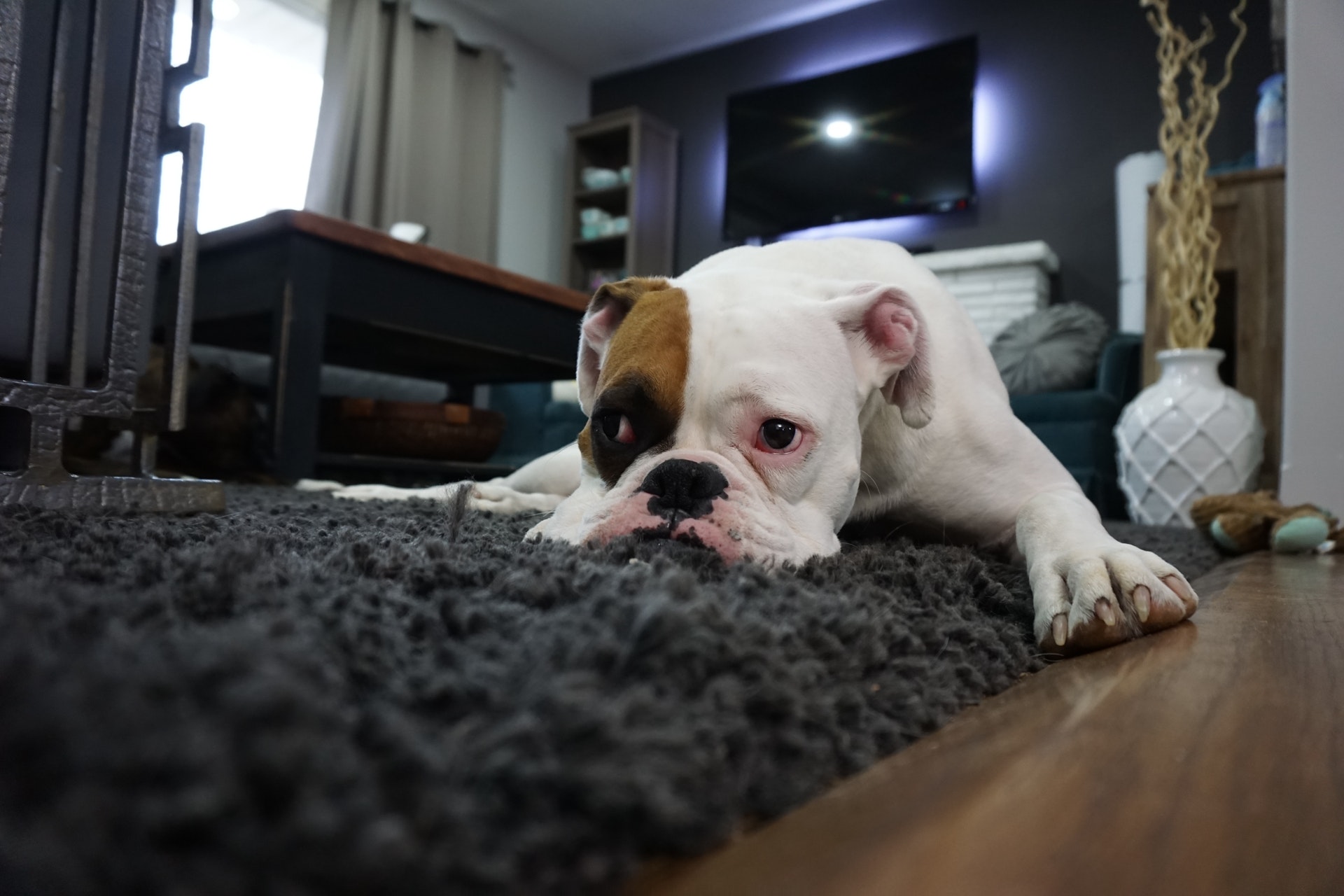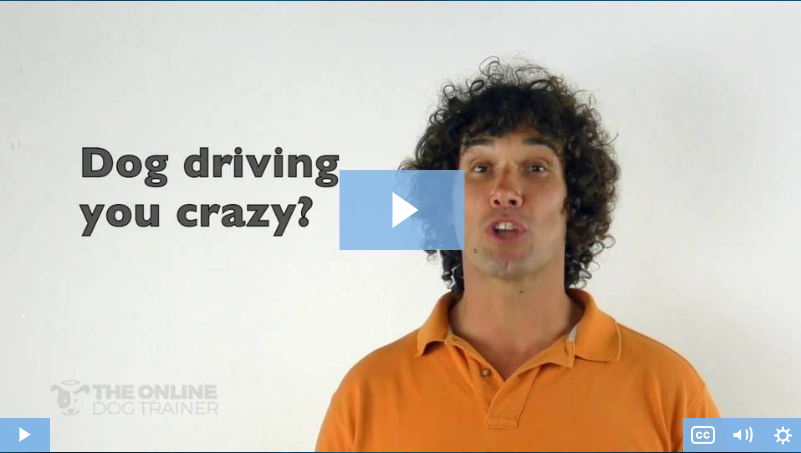If you’re looking for a sure-fire way to stop needy dog behavior, I hear you. As do the thousands of other dog owners facing the exact same problem.
Dogs might become needy for different reasons, but all those reasons have one thing in common – they’re frustrating. Not to mention annoying.
Even if your dog’s neediness is nothing more than following you from room to room, no one wants to deal with a clingy dog. And if the behavior is a little more, shall we say ‘obsessive’, no one wants to deal with that either.
Fortunately, the situation isn’t impossible to manage. Because while neediness can be a pain in the proverbial, there are a few very simple strategies you can use to bring the obsession to an end.
To jump-start the process, I’d first recommend checking out The Easyway To An Obedient Dog from Dan Abdelnoor (aka Doggy Dan) over at The Online Dog Trainer. (see video below)
During the video, Dan reveals what to do, but more importantly, what NOT to do when it comes to dialing down your dog’s obsessive need for attention.
So watch the video, implement the training Dan recommends, and you’ll see a huge decline in your dog’s needy behavior before you know it.
Here’s the link to take a look: Click Here To Check Out The Easyway To An Obedient Dog And Discover How To Finally Stop Your Dogs Obsessive, Needy Behavior… Even If You’ve Tried & Failed Before!
(video will open in new window)
Common Behaviors In Needy Dogs
Now, before we go into detail on how to address the issue, let’s just clarify exactly what needy is…
So there are two kinds of needy dogs…
…Those with velcro syndrome.
…And those with separation anxiety.
While your dog will display very clingy behavior in either of the above, separation anxiety tend to be the more problematic of the two as your dog can often display more severe issues like obsessive barking, aggression, or even destructive behavior whenever you’re not around.
So how exactly do you deal with this behavior?
Well, this can depend on a lot of things like the breed and general nature of your dog.
For instance, working dogs like Border Collie’s, German Shepherds, and various other breeds can become needy when they lack physical exercise. While more overexcited, energetic breeds can often get clingy when they don’t have an outlet to release all their pent-up energy and frustration.
It’s not just physical exercises either. A lot of dogs can display excessive needy behavior simply when they don’t have any mentally stimulating activities to keep them focused and engaged.
That’s why I’d always recommend engaging your dog on a mental as well as physical to downplay any obsessive needy behavior they might be demonstrating.

Signs Of Needy Dog Behavior
Signs Of Velcro Dog Syndrome
Does your dog do any of these…
- Follow you from room to room
- Always wants to be as close to you as possible, even to the point of jumping in your lap as soon as you sit down.
- Is he always watching you?
- Does he seem to know exactly when you’re about to move and is ready to follow you?
- He wants to be where the commotion is. And will blindly stay by your side all the time.
Signs Of Separation Anxiety Syndrome
- Your dog follows you from room to room
- He always wants to be where you are
- Does your dog howl, whine or bark the entire time you’re gone, or when he can’t get to you
- Destructive chewing, or clawing on things like doors, windowsills, furniture, and walls
- Excessive drooling, panting, or pacing
- Exhibits anxious, or out of character behavior when you’re getting ready to leave
- Defecates or urinates in the house when you’re gone
- Behaves inappropriately when you’re gone
Now, your dog doesn’t need to exhibit all of the behavioral signs to fit into one of the categories, but chances are if you notice a few of these behaviors in your dog, you have a needy dog.

Why Is My Dog Displaying Needy Behavior?
Some breeds are naturally more inclined to be needy dogs.
This is due to traits that were bred into them, yes some dogs were intentionally bred to be needier than their some of their counterparts.
So chances are, you may just have a needy dog breed.
Many working-class, hunting and herding dog breeds were bred to pay close attention to their masters, needing to always be on alert for verbal cues, and on the watch for body language in order to effectively serve their purpose.
To the same tune, most toy breeds were bred to be lap dogs.
Despite being bred for different purposes, the end result is the same, a dog breed that is more inclined than others to be where its master is at all times.
If your dog has never been needy but has suddenly become needy environmental changes are usually to blame.
A big change in day to day life or even a subtle one can leave a once independent pooch feeling clingy and anxious.
These changes can be things you may not have even noticed or don’t really considered a change.
Dogs are naturally creatures of habit and some are sensitive enough to be uprooted by the smallest of interruptions in their routine.
Common Changes That Can Affect Your Dog’s Behavior
- Someone has moved in, or out of the house
- There’s a new baby
- There’s a new pet
- You went on vacation or left your dog with another person for an extended period of time
- You moved
- There’s more, or less traffic through the house
- There’s new furniture, or things have been drastically rearranged
- You have begun walking, or playing with your dog less
- You’re home a lot less than your dog is accustomed to, longer work hours etc.
All of these things are stressors that can contribute to your dog suddenly expressing signs of velcro, or separation anxiety syndrome.
Dogs are pack animals, when there is a big change in routine, your dog can think something is wrong and become unsure of his place in his “pack”.
If this is the case your dog may adjust to the changes on his own and slowly return to his old self, once he realizes everything is ok and he’s still important.
If not, he may need a little guidance and reassurance from you.
WATCH VIDEO: Discover How To Finally Stop Your Dogs Obsessive, Needy Behavior Using A Few Simple Calming Exercises That Take Just Minutes A Day To Apply!
(video will open in new window)
The Best Methods To Eliminate Needy Dog Behavior
There are many ways to handle needy dog behavior, but not all of them are effective, or safe.
When dealing with a needy dog the most important factors are always going to be consistency and rewarding only the behaviors you want your dog to exhibit.
A reward doesn’t always have to be a treat, even a pat on the head, or words said in a certain way can assert to your dog that you’re pleased by his behavior.
By not rewarding negative behaviors your dog will begin to associate good behaviors with good things and be more likely to leave the bad ones behind.
Never, ever yell at, or hit your dog for his behavior.
It is likely that your dog won’t even comprehend why you’re yelling, or hitting him and it will only increase his stress and add to the behavioral problems, creating new ones.
How To Treat Velcro Syndrome and Separation Anxiety In Your Dog
Separation anxiety in dogs is much like separation anxiety in people, they are afraid you’re going to leave and they panic when do you leave.
There are some proven methods of easing separation anxiety, while the same one won’t work for every dog, one of them is sure to work.
When you start a new method stick to it for at least four weeks, don’t expect immediate results,
Remember you’re trying to teach your dog, and it may take a moment for him to catch on. If after four weeks of consistently following the method your dog is still showing absolutely no improvement, slowly introduce a new one.
Don’t just abruptly switch, because you can confuse your dog and make things worse.
Some of these methods work best when paired with other methods, ultimately you will decide what works best for you and your dog.
Exercise, Exercise, Exercise
Make sure to give your dog at least 30 to 60 minutes of high energy, aerobic exercise every day.
A well-exercised dog is less likely to become bored, or anxious.
This can be achieved through games like fetch, a long walk, play time with other dogs, or a game of tug of war.
In addition to being healthy for him, this play time also reassures your dog that you have time for him.
Work On Obedience Commands And New Tricks
Most dogs love a good challenge, especially when successfully completing it gets a reward.
In addition to mentally stimulating your dog, you’ll be ensuring when you tell him to do something, he does it.
If your dog is already a pro at come, sit, stay, you can make things more interesting for you and him. You could teach him to roll over, play dead, or find things you’ve hidden, The possibilities are endless.
Giving your dog this “job” and special one-on-one time to look forward to can work wonders in easing negative behaviors.

Distractions
If you’re going to be gone for a few hours, or just need some space from your pooch, offer a good distraction.
Kongs work really well for this and can be filled with an endless list of healthy treats for your dog.
Only give him this special treat when you’re away from him, even if you’re just going outside, or shutting him out of a room.
He should catch on pretty quickly that yummy treats like this only happen when you’re about to leave and he’ll begin to associate being away from you, or you leaving with a positive, instead of negatives.
Stop Making A Big Deal Over Leaving
Start ignoring your dog for 20 minutes before you leave, or want to be left alone.
Don’t pet him, talk to him, or even acknowledge he’s there.
Do the same thing when you return.
This will teach your dog that you leaving is no big deal. The less you focus on him before leaving, the less he’ll focus on you after you’ve left.
Desensitization Flooding
Set aside a day where you don’t have anything to do and don’t need to leave the house.
Start by exiting the house for only a few minutes, then entering. Do this over and over increasing the time you’re “gone” each time until your dog is no longer waiting at the door for you, or doesn’t seem to care that you’re home.
It may take a few times of trying this to see real results, but the goal is to show your dog that no matter how many times you leave, or how long you’re gone. You always come back.
The Reality Of Needy Dog Behavior
There is no immediate fix for a needy dog, it takes a lot of work and a lot of patience. In the end, the hard work will pay off. You will have a happier dog and a happier life with your dog.
If you do choose to go this route, be sure to do your homework and get one that is experienced with needy dogs. This ensures the behaviorist will be experienced enough to have the skills to effectively help you and your dog.
Don’t just go with the cheapest one, or the one that claims to have the most experience. Ask questions, look up reviews, introduce them to your dog and see how your dog responds to them.
If you have to hire a dog behaviorist, you want to be sure you’re getting your money’s worth and your beloved pet is getting the best help he can get.
Do you have any awesome tips, tricks, or methods of dealing with needy dog behavior that we haven’t covered? If so, let me in the comments below…
WATCH VIDEO: Discover How To Finally Stop Your Dogs Obsessive, Needy Behavior Using A Few Simple Calming Exercises That Take Just Minutes A Day To Apply!
(video will open in new window)

